This article was co-authored by Luba Lee, FNP-BC, MS and by wikiHow staff writer, Janice Tieperman. Luba Lee, FNP-BC is a Board-Certified Family Nurse Practitioner (FNP) and educator in Tennessee with over a decade of clinical experience. Luba has certifications in Pediatric Advanced Life Support (PALS), Emergency Medicine, Advanced Cardiac Life Support (ACLS), Team Building, and Critical Care Nursing. She received her Master of Science in Nursing (MSN) from the University of Tennessee in 2006.
There are 15 references cited in this article, which can be found at the bottom of the page.
wikiHow marks an article as reader-approved once it receives enough positive feedback. This article received 20 testimonials and 100% of readers who voted found it helpful, earning it our reader-approved status.
This article has been viewed 2,968,697 times.
There’s no doubt about it… that’s a jock itch rash you’ve just noticed on your skin. While these red, flaky, cracking, and sometimes raised patches of skin around your butt, groin, and thighs aren’t typically dangerous, the itchy skin definitely isn’t pleasant. Like ringworm and athlete’s foot, jock itch is a classified as a type of tinea (fungal) infection, which easily spreads from person to person. Not to worry, though—treating jock itch is super simple, and we’re here to walk you through every step of the process. With the proper treatment strategies, you can expect your rash to go away in 2-3 weeks.[1]
Things You Should Know
- Wash and dry the affected area before applying an OTC antifungal cream, antifungal spray, or antifungal powder.
- Talk to your doctor if your jock itch doesn’t improve in 2 weeks. They might prescribe a stronger medication (and/or antibiotics if you’re experiencing an infection).
- Prevent jock itch outbreaks by showering regularly, especially after a workout. Always change into loose, comfortable clothes afterwards.
- Wash your workout clothes, underwear, and athletic supporter often, and never share clothes or towels with anyone else.
Steps
Treatment Procedure
-
1Wash and dry the affected skin before applying any topical products. Use soap and water to clean off the jock itch rash and blot the skin dry with a towel.[2] Make sure that you use a different, clean towel for this, so you don’t end up spreading the jock itch to other parts of your body.[3]
- Jock itch can spread easily if it touches your skin, which is why it’s important to take extra precautions.
- Try to clean and dry the affected area at least once a day, or whenever it gets sweaty or wet (like after a tough workout or swim).[4]
- Always treat your jock itch as soon as possible. When left untreated, it can linger for weeks (and even months).[5]
-
2Apply an OTC antifungal topical product. Get an antifungal cream, antifungal spray, or antifungal powder and apply it as frequently and as long as the guidelines on the package instruct.[6] Coat the affected skin as well as the 1 to 2 in (2.5 to 5.1 cm) of unaffected skin around the rash with the product.[7]
- Always use your jock itch medication for the entire specified amount of time, even if your symptoms start to improve. If you stop using the treatment early on, your jock itch may flare up again.[8]
- Generally speaking, a jock itch rash is identifiable by its prominently curved edges.[9] Still, it’s best to visit your doctor to get your jock itch officially diagnosed first, since it can be hard to distinguish from other health issues, like lichens planus.[10]
Advertisement -
3Wash your hands after touching the affected skin. Lather your hands up and thoroughly wash them with warm water after applying the treatment to your rash. This way, you won’t accidentally spread the jock itch to another section of your skin.[11]
-
4Slip into a clean pair of underwear after applying the medication. Your old underwear likely made direct contact with your jock itch, so it’s not a good idea to put it back on. Wear a new, clean pair of underwear whenever you apply your jock itch medication.[12]
- If you normally wear briefs, try switching to boxer shorts instead.[13]
-
5Keep your skin clean and dry with barrier cream or a hair dryer. Apply a zinc-based barrier cream to the affected skin, like Desitin or Butt Paste—this helps keep the rash from getting moist. If you’re really struggling to keep the skin dry, plug in a hair dryer and set it to the lowest possible heat level. Hovering the dryer a few inches or centimeters away from your skin, blow over the surface until it’s completely dry.[14]
- Talcum powder can also help your skin stay dry.[15]
- Fungal infections thrive in warm, moist environments, so it’s important to do everything in your power to keep the affected skin as dry as possible.
-
6Choose loose garments made with natural materials as your infection heals. Opt for clothing items made with fabrics that are natural, like cotton, rather than tight-fitting or rough-textured clothes.[16]
- Cotton is an absorbent fabric, while materials like acrylic and spandex aren’t very absorbent at all.[17] When you’re dealing with jock itch, you don’t want to wear clothes that can potentially trap moisture.
-
7Refrain from scratching the affected skin. Although it may feel good in the moment, scratching can break your skin, which creates the potential for infection. Plus, scratching the skin makes it easy to transfer the rash to other parts of your body.[18]
- Trim your nails if you can't stop scratching, and wear gloves when you're trying to go to sleep at night.
- Steer clear of heating pads, as these won’t help with the itching at all. A cool, damp rag or a towel-wrapped ice pack draped over your skin may provide some relief.[19] You know the drill, though—always dry off once you’re done.
- Applying a little bit of corn starch to the affected skin may help with the itching, too.[20]
-
8Talk to your doctor if your symptoms don’t improve after 2 weeks. Jock itch doesn’t go away overnight, but it shouldn’t be hanging around after treatment. In this case, call your doctor and explain the symptoms you’re still experiencing—they might prescribe a medication to help.[21]
- During the jock itch healing stages, the rash begins to disappear and your skin starts looking more normal. The affected skin also starts to itch less.[22]
Prevention Strategies
-
1Take a shower daily and after you exercise. Practice good hygiene habits, especially when you work out and sweat a lot. Once you’re finished in the shower, be sure to dry off completely.[23]
- It also helps to towel-dry your skin whenever it gets damp or sweaty to prevent jock itch from developing in the first place. The dryer and less moist your skin is at any given time, the better.[24]
-
2Use your own clothing and towels rather than sharing. Always have your own towel and change of clothes on hand when you plan to take a shower, like after working out at the gym. Sharing clothes and towels is an easy way to spread jock itch.[25]
-
3Wear loose, comfortable clothing made with natural fabrics. To prevent jock itch in the future, opt for loose-fitting clothes made with fabrics like cotton that don’t chafe your skin. With this in mind, make the switch to boxers instead of briefs.[28]
- When you wear looser and more absorbent clothes, you’re less likely to develop jock itch.
-
4Wash your underwear and athletic supporter frequently. Make sure that you’re washing your towels, socks, exercise clothes, and anything else that’s gotten damp and sweaty, too.[29] It’s also important to avoid carrying wet or sweaty clothing in your gym bag (or keeping it in a gym locker). Instead, wash your gym clothes after each you wear them.[30]
- On a similar note, take off wet swimsuits quickly, and be sure to wash the swimsuit. Do not simply hang it out to dry. Change into something dry right away as well.
- Change out of athletic clothes as soon as you can so there’s less risk of fungal growth.
-
5Put on your socks before you put on your underwear if you have athlete’s foot. Make sure to cover your feet up with your socks before your feet come into contact with any of your other clothing. Doing this keeps the fungus from spreading to your groin from your feet.[31]
- Like jock itch, athlete’s foot is considered a type of tinea (fungal) infection. If your athlete’s foot reaches your groin, it can become jock itch.[32]
Expert Q&A
Did you know you can get expert answers for this article?
Unlock expert answers by supporting wikiHow
-
QuestionCan aloe vera cure jock itch?
 Jurdy Dugdale, RNJurdy Dugdale is a Registered Nurse in Florida. She received her Nursing License from the Florida Board of Nursing in 1989.
Jurdy Dugdale, RNJurdy Dugdale is a Registered Nurse in Florida. She received her Nursing License from the Florida Board of Nursing in 1989.
Medical Review Board
-
QuestionCan jock itch be spread through oral or vaginal sex?
 Jurdy Dugdale, RNJurdy Dugdale is a Registered Nurse in Florida. She received her Nursing License from the Florida Board of Nursing in 1989.
Jurdy Dugdale, RNJurdy Dugdale is a Registered Nurse in Florida. She received her Nursing License from the Florida Board of Nursing in 1989.
Medical Review Board
-
QuestionWhat cream is best to treat itching and a fungal infection?
 Jurdy Dugdale, RNJurdy Dugdale is a Registered Nurse in Florida. She received her Nursing License from the Florida Board of Nursing in 1989.
Jurdy Dugdale, RNJurdy Dugdale is a Registered Nurse in Florida. She received her Nursing License from the Florida Board of Nursing in 1989.
Medical Review Board
Warnings
- See a doctor as soon as possible if you develop any symptoms of an infection, like a fever.[34]⧼thumbs_response⧽
- In some cases, jock itch can permanently change your skin tone.[35]⧼thumbs_response⧽
- It’s difficult to get rid of jock itch forever, as people often experience flare-ups again. The best way to get rid of jock itch permanently is to stay on top of your hygiene habits—do your best to stay clean (especially after exercising), wear comfortable clothes, and dry yourself off completely whenever you hop out of the tub or shower.[36]⧼thumbs_response⧽
- Try not to be sexually active as you recover from jock itch, since you can potentially give it to your partner.[37]⧼thumbs_response⧽
Things You’ll Need
- Antifungal cream, antifungal spray, or antifungal powder
- Barrier cream (like Butt Paste or Desitin)
References
- ↑ https://www.seattlechildrens.org/conditions/a-z/jock-itch/
- ↑ https://www.uclahealth.org/news/vanquishing-jock-itch-requires-two-pronged-approach
- ↑ https://www.hopkinsallchildrens.org/Patients-Families/Health-Library/HealthDocNew/Jock-Itch
- ↑ https://kidshealth.org/en/parents/jock-itch.html
- ↑ https://www.hopkinsallchildrens.org/Patients-Families/Health-Library/HealthDocNew/Jock-Itch
- ↑ https://www.hopkinsallchildrens.org/Patients-Families/Health-Library/HealthDocNew/Jock-Itch
- ↑ https://www.urmc.rochester.edu/encyclopedia/content.aspx?contenttypeid=85&contentid=P00310
- ↑ https://www.hopkinsallchildrens.org/Patients-Families/Health-Library/HealthDocNew/Jock-Itch
- ↑ https://www.hopkinsallchildrens.org/Patients-Families/Health-Library/HealthDocNew/Jock-Itch
- ↑ https://www.uclahealth.org/news/vanquishing-jock-itch-requires-two-pronged-approach
- ↑ https://www.urmc.rochester.edu/encyclopedia/content.aspx?contenttypeid=85&contentid=P00310
- ↑ https://familydoctor.org/condition/jock-itch/
- ↑ https://healthyhorns.utexas.edu/HT/HT_jockitch.html
- ↑ https://www.uclahealth.org/news/vanquishing-jock-itch-requires-two-pronged-approach
- ↑ https://healthyhorns.utexas.edu/HT/HT_jockitch.html
- ↑ https://healthyhorns.utexas.edu/HT/HT_jockitch.html
- ↑ https://site.extension.uga.edu/textiles/textile-basics/understand-your-fibers/
- ↑ https://www.urmc.rochester.edu/encyclopedia/content.aspx?contenttypeid=85&contentid=P00310
- ↑ https://www.sutterhealth.org/health/teens/male/jock-itch
- ↑ https://www.sutterhealth.org/health/teens/male/jock-itch
- ↑ https://medlineplus.gov/ency/article/000876.htm
- ↑ https://www.icliniq.com/articles/infectious-diseases/jock-itch
- ↑ https://www.urmc.rochester.edu/encyclopedia/content.aspx?contenttypeid=85&contentid=P00310
- ↑ https://healthy.kaiserpermanente.org/health-wellness/health-encyclopedia/he.jock-itch-care-instructions.uh4967
- ↑ https://kidshealth.org/en/parents/jock-itch.html
- ↑ https://www.urmc.rochester.edu/encyclopedia/content.aspx?contenttypeid=85&contentid=P00310
- ↑ https://healthy.kaiserpermanente.org/health-wellness/health-encyclopedia/he.jock-itch-care-instructions.uh4967
- ↑ https://healthyhorns.utexas.edu/HT/HT_jockitch.html
- ↑ https://healthy.kaiserpermanente.org/health-wellness/health-encyclopedia/he.jock-itch-care-instructions.uh4967
- ↑ https://healthyhorns.utexas.edu/HT/HT_jockitch.html
- ↑ https://healthy.kaiserpermanente.org/health-wellness/health-encyclopedia/he.jock-itch-care-instructions.uh4967
- ↑ https://www.mayoclinic.org/diseases-conditions/jock-itch/symptoms-causes/syc-20353807
- ↑ https://www.uclahealth.org/news/vanquishing-jock-itch-requires-two-pronged-approach
- ↑ https://healthy.kaiserpermanente.org/health-wellness/health-encyclopedia/he.jock-itch-care-instructions.uh4967
- ↑ https://medlineplus.gov/ency/article/000876.htm
- ↑ https://www.health.harvard.edu/a_to_z/jock-itch-tinea-cruris-a-to-z
- ↑ https://www.dovemed.com/diseases-conditions/jock-itch/
About This Article
In most cases, jock itch will clear up on its own after 2 to 3 weeks. If you want to speed up the process, you can use an over-the-counter antifungal ointment designed to treat the condition. Apply the ointment as directed on the package for 1 to 2 weeks to see if your rash clears up. Since jock itch is made worse by sweating and friction, wear loose-fitting clothing and avoid exercise while you’re treating the rash. To keep the area dry, cover the rash with talcum powder 2-3 times a day. If your jock itch doesn't go away after a few weeks, contact your doctor. If you have athlete’s foot at the same time as your jock itch, you'll want to treat both rashes. Jock itch and athlete's foot can be caused by the same bacteria, and if you don't treat the athlete's foot at the same time, the jock itch might come back. You can use an over-the-counter ointment designed for athlete's foot to help clear up the rash. For tips from our Medical reviewer on how to prevent future jock itch outbreaks, read on!
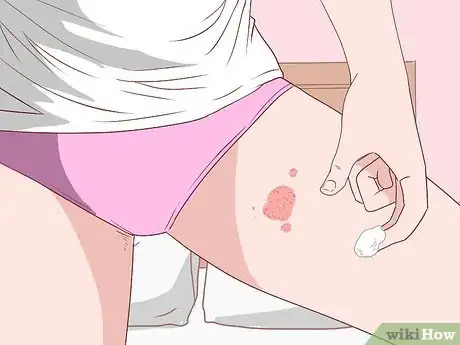
-Step-10-Version-3.webp)
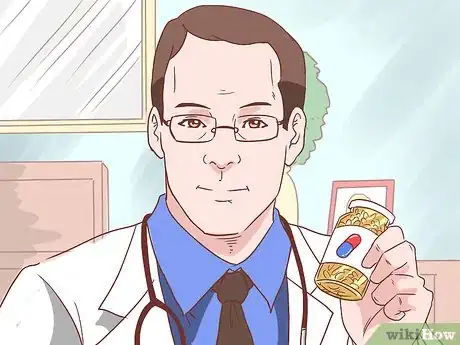
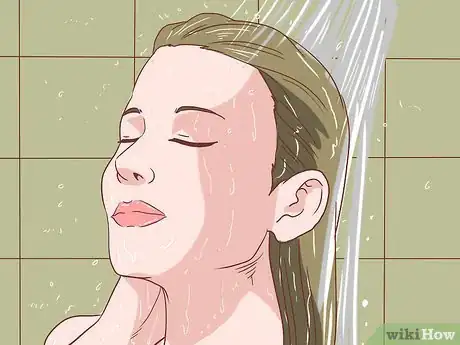
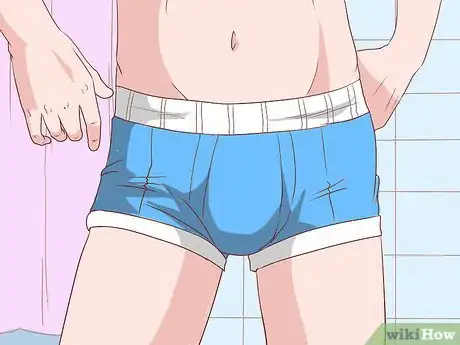
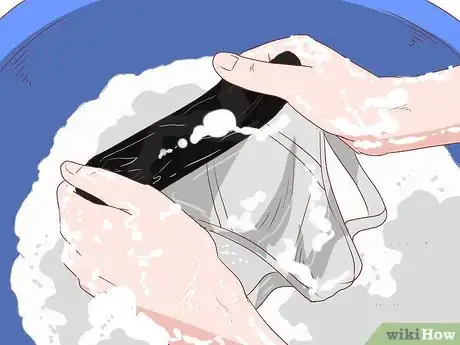
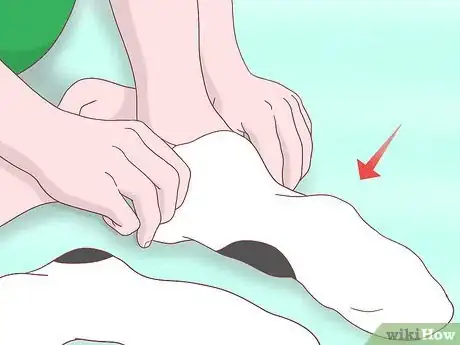
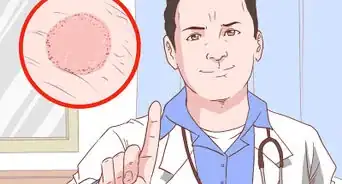
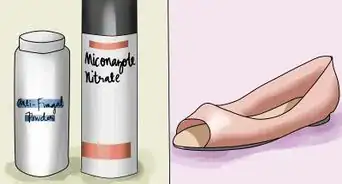



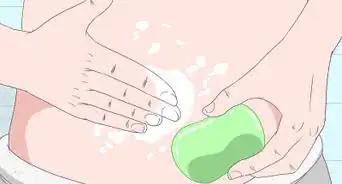

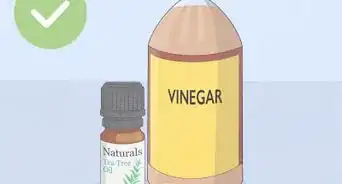
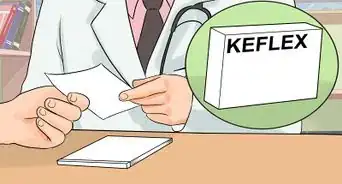

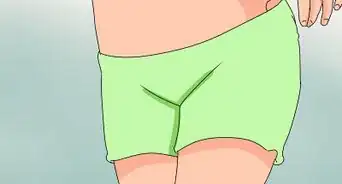

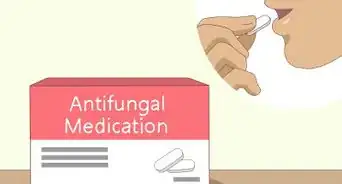
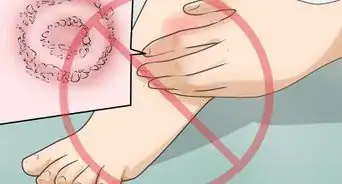









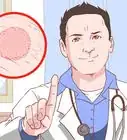
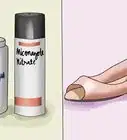

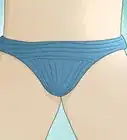




































Medical Disclaimer
The content of this article is not intended to be a substitute for professional medical advice, examination, diagnosis, or treatment. You should always contact your doctor or other qualified healthcare professional before starting, changing, or stopping any kind of health treatment.
Read More...